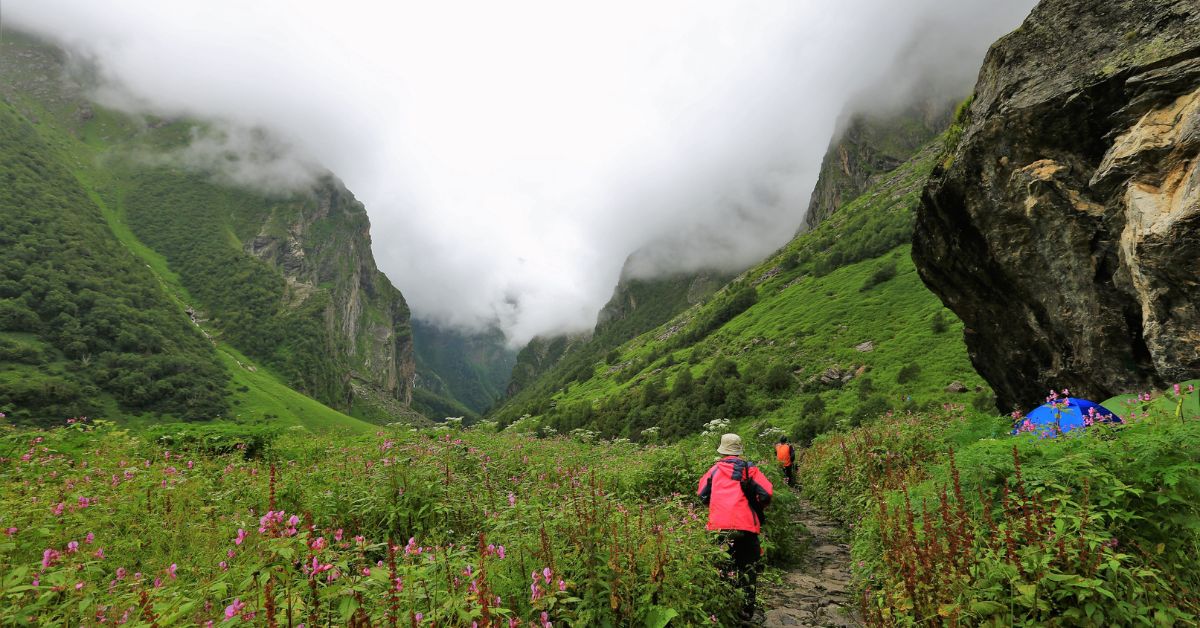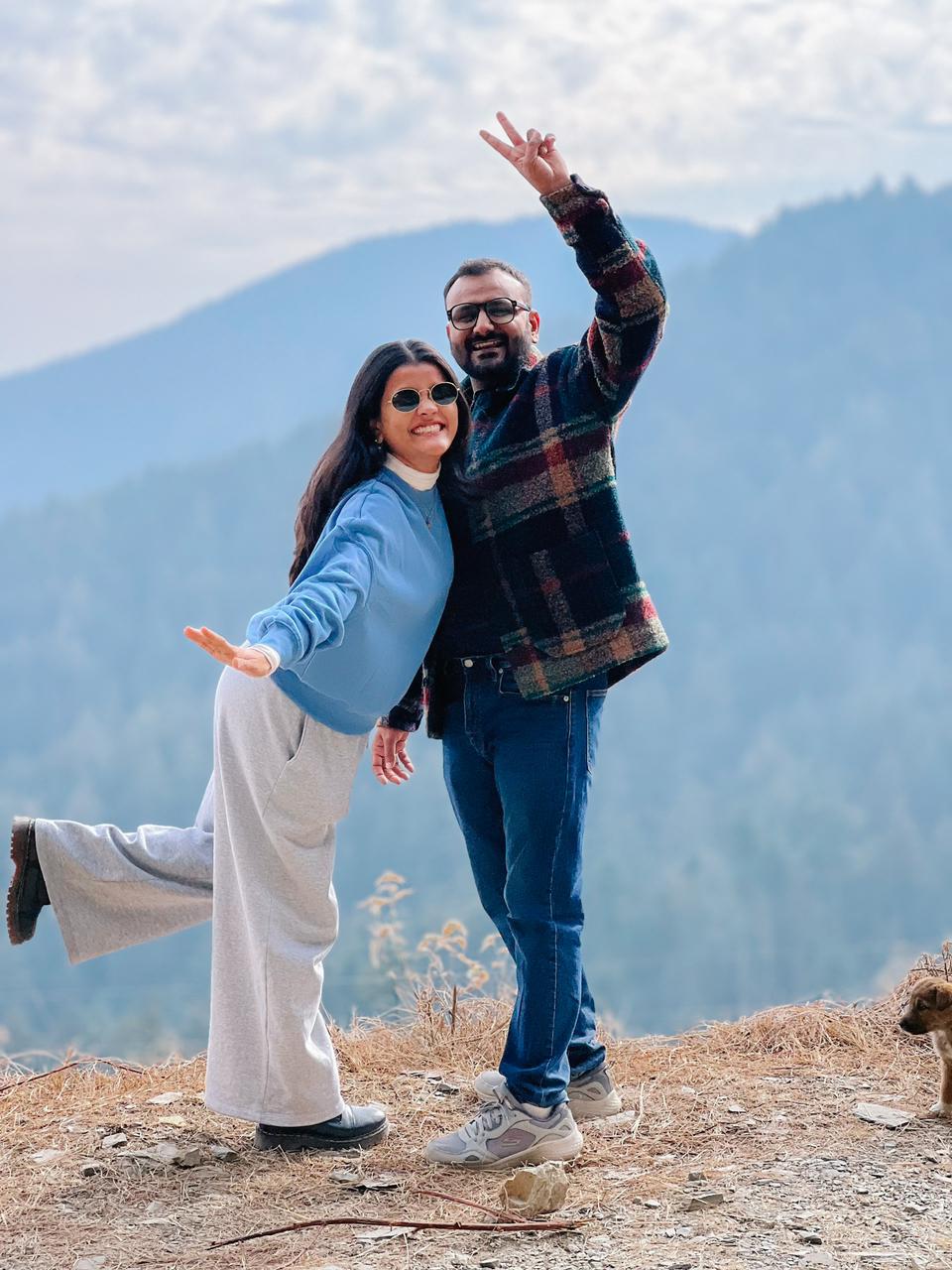If you’re craving a break from the daily grind and want a breath of fresh mountain air, the Valley of Flowers in Uttarakhand is the perfect escape. Tucked away in the Western Himalayas, this stunning destination offers a much-needed retreat and is the perfect opportunity to reconnect with nature.
Declared a UNESCO World Heritage Site in 2005, the valley’s vibrant meadows, cascading waterfalls, and picturesque landscapes make it a haven for adventure seekers and nature enthusiasts alike.
The journey begins in the charming village of Govindghat and leads you through quaint Himalayan villages alongside the peaceful Pushpawati River. The trek is around 17 km one-way and can be completed in about four to five days, depending on your pace.
As you trek, you’ll find yourself immersed in the natural beauty of the valley, where you can take in the breathtaking sights and sounds of the great outdoors.
Ready to plan your adventure? The Better India has done the homework for you by curating a full itinerary based on insights from travel sites, bloggers and influencers. This means your trek will be easy, smooth, and full of fun, giving you the freedom to soak up every moment of your journey.
So pack your bags and get ready for an unforgettable experience in the magical Valley of Flowers!
Why Valley of Flowers?
Imagine this — you are surrounded by lush green mountains with crystal clear streams of water running through them. Sounds straight out of a storybook, right? The Valley of Flowers, a UNESCO-protected site will surpass all your expectations.
The Valley of Flowers was discovered by the British mountaineer and botanist Frank Smythe. In 1931, Smythe and his climbing partner R L Holdsworth stumbled upon the valley while returning from a successful expedition to Mount Kamet. Enchanted by the natural beauty of the area, Smythe wrote about his experience in his book, “The Valley of Flowers”, published in 1937.
Aptly put by an Inside Himalayas article, “You don’t quite understand how lucky you are until you get there.”
“Whatever you might have heard, whatever photographs you might have seen, absolutely nothing prepares you for that burst of colour as far as the eyes can see, framed by mist-shrouded, snow-powdered mountain ranges whose tops disappear into the sky. You feel as though you have arrived at the top of the world,” the article elaborates.

Nestled in the Chamoli District of Uttarakhand, the place comes alive in the monsoon months blossoming with flowers of more than 500 varieties including the Himalayan Slipper Orchid, Brahma Kamal, Marsh Marigold, Blue Poppy, Cobra Lily, and Himalayan native Dactylorhiza Hatagirea.
Apart from the natural allure, the place is also said to have religious significance.
According to a Lifestyle Asia report, “The national park also holds a significant mythological association. According to the epic Ramayana, it is the place where Lord Hanuman found the magical herb “Sanjeevani” to help save Lakshman, brother of Lord Rama, who was injured during the battle between Lord Rama and demon King Ravana.”
How to reach the valley?
When planning a trek to the Valley of Flowers in Uttarakhand, it’s important to consider the most convenient modes of transportation to reach your starting point at Govindghat. Here’s how you can get there –
By Car:
You can drive from major cities like Delhi or Dehradun to Govindghat. The journey from Delhi takes approximately 10-12 hours, depending on traffic and road conditions. From Delhi, you can also avail public transport from ISBT or Delhi Gate to Rishikesh and take another bus to Joshimath and then to Govindghat.
You’ll travel through major towns such as Rishikesh and Haridwar before reaching Govindghat. The roads are scenic, offering beautiful views of the mountains and rivers along the way.
By Air:
The nearest airport to Govindghat is Jolly Grant Airport in Dehradun. From the airport, you can hire a taxi or take a bus to Govindghat. The drive from Dehradun to Govindghat is 286 km and takes approximately 10-12 hours, so you might want to plan your flight arrival time accordingly.
You can opt for public transport from Dehradun to Rishikesh and then to Joshimath and so on.
By Rail:
The closest railway station to Govindghat is Rishikesh, which is well-connected to major cities in India. Once you arrive at Rishikesh, you can hire a taxi or take a bus to Govindghat. The drive from Rishikesh to Govindghat takes about 10-11 hours.
Once you reach Govindghat, you can begin your trek towards Ghangaria and the Valley of Flowers. Make sure to check the local transportation options and plan your journey ahead of time for a smooth travel experience.
Day-wise itinerary
We spoke to travellers and bloggers, Himani and Sagar Patel, who travelled to the Valley of Flowers in 2019. The couple completed the trek in 5 days, slowly taking in the natural beauty of the landscapes.
This is their day-wise plan-
Day 1: The couple drove from Rishikesh to Joshimath. “We reached Joshimath in the evening and checked into a local guest house to recharge ourselves for the upcoming trek,” they shared.
Day 2: “We trekked till Ghangharia which is around 9 km from the starting point and is at an altitude of around 10,000 ft. We stayed overnight at a campsite in Ghangharia.”
The village serves as the base camp for the Valley of Flowers and has various stay options, eateries and scenic views, making it an ideal place to rest and recharge for the rest of the hike.

Date 3: “We woke up early the next morning and started our trek to the Valley of Flowers which was around 4 km. We then entered the Valley which is 6-7 km long and ends with a glacier,” the shared.
Note that there are no eateries inside the park and you will have to carry your own food. “We packed our lunch and ate it with the best views of the valley,” shares Himani.
Day 4: We trekked from Ghangaria to Hemkund Sahib, which is a steep climb but worth the effort. At the top, we enjoyed the Gurudwara and the serene lake. Hemkund Sahib is the world’s highest Gurudwara at 4,329 m. We had a delicious meal at the Langar and then trekked back down to Ghangaria to stay the night.
Day 5: We started our journey back from Ghangaria to Govindghat, which took about 5 hours. After lunch in Govindghat, we drove back to Joshimath and stayed overnight at the local guest house.
Make sure you carry all your medicines, a raincoat in the monsoons and ample amount of drinking water before you go on the trek. Once you are inside the valley, there are no shops or caretakers to help you out, the couple advises.
Where to stay in the magical valley?
Keeping in mind your flights/train timings, you might consider staying to book a stay in Rishikesh. Here are some homestays and hostels that you can book.
Since no camps or stays are allowed inside the valley, you will have to book stays at Govinath, and Hemkund Sahib depending on your itinerary. Here is a list of stays that you can book.
The park will be open for travellers and trekkers from June onwards and we recommend that this will be the best time to plan your travels.
(Edited by Padmashree Pande; All free images)
No comments:
Post a Comment